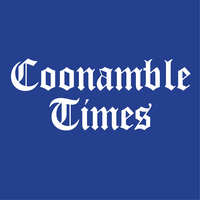Government dismisses renewed opposition on renewables
Paula Doran
04 September 2024, 9:20 PM

The State Government has hit back at claims that their Energy Roadmap is out of control.
This follows a call by the NSW Nationals for a moratorium and stocktake of renewables projects after concerns the only active renewable energy zone (REZ) is already completely overblown.
NSW Nationals Leader Dugald Saunders said the State can’t keep going down the current path they are on.
“We have a power problem in NSW and it extends well beyond the threat of blackouts. The Minns Labor Government is reneging on its responsibilities when it comes to renewables,” he said.
“The Central West Orana REZ is already over-subscribed with the number of projects and we can’t get a straight answer as to where things are up to, or where we’re heading.”
But Minister for Climate Change and Energy Penny Sharpe refuted those concerns.
"Have the Nationals told their Liberal counterparts they’re trying to lock in blackouts and energy price spikes by removing support for the state's energy plan?
"The Minns Labor Government is getting on with the job while managing the careful exit of coal fired power stations.
“More delays and support for nuclear power will just lock in blackouts and energy price spikes.”
Processes in place to fill the coal gap
The Minister for Climate Change and Energy said NSW has put in place the architecture and processes to deliver the renewable energy projects needed to fill the gap that’ll be left by ageing coal-fired power stations exiting the grid.
“This transition is urgent – we must get the infrastructure built, to keep the lights on and put downward pressure on energy bills,” Ms Sharpe said.
“The Energy Roadmap was agreed to under the last Government, with bipartisan support, which is crucial for giving investors' confidence.”
The Minister said NSW is already making progress to ensure we keep the lights on and downward pressure on prices:
- In NSW, 35% of our energy is already being powered by renewables.
- Almost half of the 12 gigawatts of renewable generation we seek by 2030 is locked in.
- A quarter of the long duration storage target has also been secured.
“There are many checks and balances in place as NSW delivers infrastructure – whether it be a transport, project or energy project. Many are referred to the Independent Planning Commission (IPC) for determination.
“We will continue to work closely with industry and impacted communities to strike the right balance between supporting renewable energy projects and responsible development.”
She said the transition would bring huge benefits including more income for farmers, more investment in local infrastructure, more local jobs, more opportunities for families and local businesses, and a drought-proof revenue stream for many landowners.
“We’ve boosted compensation to landowners, and are delivering additional funding to communities living in our renewable energy zones. For example, the NSW Government has announced $128 million in funding for the Central-West Orana community, to be delivered in the next four years as projects are built,” she said.
The current renewable energy status:
Operating projects: As of July 2024, the following are operational in NSW:
- 36 large-scale solar farms
- 17 onshore wind farms
- one battery energy storage system.
- The Central-West Orana REZ is expected to attract around $10 billion of private investment into the local region through to 2030, and support around 5000 construction jobs and 500 ongoing jobs.
- Planning is underway on the other REZs.
- AEMO estimates NSW will need around 20 gigawatts of large-scale solar generation by 2050 – this would require only 0.06% of rural land in NSW.
Cumulative impact in the regions – Saunders
But Mr Saunders does not agree that renewables are the golden goose required.
“When you combine all the renewable projects, add in the impact of transmission lines, along with the additional accommodation and other services, you start to get an inkling of the cumulative impact being felt.
“It’s pushing our regional communities to breaking point and it should be a clear warning that now is the time to stop just randomly allowing projects in.”
According to the EnergyCo website the Central-West Orana REZ will deliver “at least 4.5 gigawatts of transmitted electricity” which is vastly lower than the calculations by Dubbo, Mid-Western and Warrumbungle councils.
“The renewable energy zone having four times more generation than originally planned means more land is being used, more families and communities are being impacted, and there’s a growing frustration,” Mr Saunders said.
“It would be like forcing four times as many people onto the train in the morning for the same result. Everyone is severely cramped and stressed with no control over what is happening.
“Regional residents are currently being put through this, but we’re still no closer to solving the supply issue hanging over our state and the Government needs to be honest about where it wants this REZ to finish up.
“I’m not suggesting all renewables projects should be scrapped, but we need the Government to pause, assess and take stock of exactly where we are in this energy roadmap before we see irreversible damage to regional areas with very little to show for it,” Mr Saunders said.



